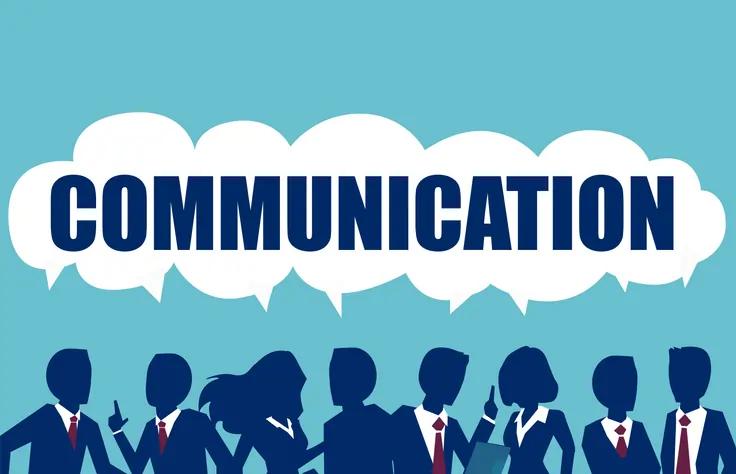The Real Cost of Internal Miscommunication—and How to Fix It
The Real Cost of Internal Miscommunication—and How to Fix It
Published by Wanda Rich
Posted on May 13, 2025

Published by Wanda Rich
Posted on May 13, 2025

Internal miscommunication is one of the most persistent—and costly—challenges businesses face. It doesn’t always present as a crisis, but its effects are widespread: slowed decision-making, duplicated work, disengaged employees, and missed opportunities.
According to Project.co’s 2023 Communication Statistics Report, 96% of people believe workplace failures are caused by poor communication. Whether it’s a vague email, a missed update, or a department working in isolation, the breakdowns accumulate quickly. Companies lose time, money, and opportunities simply because teams aren’t aligned.
The Silent Saboteur
Miscommunication in the workplace isn’t always dramatic or visible. More often, it takes the form of small breakdowns that quietly derail progress: vague emails that leave room for misinterpretation, project updates that never make it beyond one department, or changes in direction announced without context. These lapses may seem minor in isolation, but over time, they cause real friction. Employees waste time chasing clarification, make decisions based on incomplete information, or duplicate efforts already underway elsewhere in the company.
In organizations where cross-functional collaboration is essential, lack of clarity slows momentum and increases the likelihood of errors. Teams operate without a shared understanding of priorities, and the gaps between departments widen. People begin filling in the blanks with assumptions—and those assumptions don’t always align. The result? Missed deadlines, misaligned goals, and a growing sense of frustration that undermines morale and collaboration.
According to a Salesforce survey, 86% of employees and executives cite ineffective communication and poor collaboration as the leading causes of workplace failure. That’s not just a challenge for large enterprises—it’s a systemic issue affecting organizations of all sizes and sectors.
What begins as a minor misunderstanding can evolve into costly organizational misalignment.
The Business Impact
The financial cost of miscommunication is anything but abstract. One of the clearest examples is time—specifically, the hours employees spend trying to clarify tasks, confirm next steps, or locate missing information. According to the Society for Human Resource Management (SHRM), a company with just 100 employees loses an average of 17 hours per week to communication breakdowns. That adds up to more than $525,000 in wasted productivity every year.
But time isn’t the only thing lost. Miscommunication also fuels disengagement. When people feel out of the loop or confused about expectations, they become less invested in their work. Gallup’s workplace research shows that employees who don’t receive clear direction are more than twice as likely to feel disengaged—and disengaged employees are more likely to underperform, miss deadlines, and eventually leave. Disengaged employees may stop offering ideas, withdraw from collaboration, or quietly exit projects—leading to a slow erosion of team effectiveness. The cost of turnover—including recruitment, onboarding, and lost institutional knowledge—can quickly eclipse the original communication failure that caused it.
While many of these breakdowns happen behind the scenes, they often surface in how companies operate externally. Confused teams struggle to deliver consistent service, respond quickly to customer needs, or execute aligned messaging across departments. Over time, these internal gaps can chip away at customer confidence and competitive edge.
Tools vs. Culture
In an effort to improve communication, many companies turn to technology—adding tools like Slack, Microsoft Teams, or Zoom to streamline collaboration. It’s easy to mistake new software for progress—especially when remote and hybrid models demand digital communication. But digital platforms alone don’t solve the root issue. In fact, they often amplify existing problems. If expectations are unclear, feedback is avoided, or leadership lacks follow-through, the technology simply speeds up the confusion.
As MIT Sloan research explains, “technology reveals culture more than it reshapes it.” Without a strong communication culture—one grounded in clarity, accountability, and openness—adding tools just creates more noise.
That culture starts with leadership. Managers and executives set the tone by how they communicate priorities, explain decisions, and invite feedback. According to Harvard Business Review, one of the most overlooked leadership skills is setting clear expectations—and it’s fundamental to reducing ambiguity across teams. When leaders consistently clarify not just what needs to be done, but why it matters, they foster alignment across departments.
Healthy communication isn’t a platform feature—it’s a practice. It requires leaders to model transparency, build feedback loops, and create space for teams to speak up when something is unclear. Without that foundation, even the most sophisticated tools won’t deliver better results.
How to Fix It
Improving communication doesn’t require a months-long overhaul. Small, consistent changes can create a meaningful shift. Here are five practical strategies to strengthen clarity, accountability, and alignment across teams:
These steps don’t require new software—they require intention. When leaders treat communication as an operational priority, not an afterthought, it shapes how teams perform, how problems are solved, and how progress is made.
Communication: A Strategic Priority
Communication isn't a soft skill—it’s a core business function. Organizations that prioritize clarity, context, and consistency don’t just avoid mistakes—they unlock faster decision-making, stronger collaboration, and higher retention.
As companies grow more complex—spanning teams, tools, and time zones—internal alignment becomes critical. When employees understand the “why” behind their work, they stay engaged, focused, and accountable. Miscommunication, on the other hand, creates friction that slows execution and erodes trust across departments.
Leaders who treat communication as a strategic discipline—not just an operational necessity—create cultures where people can work efficiently, solve problems faster, and stay committed to shared goals. In the end, effective internal communication isn't just good management—it’s a competitive advantage.
Explore more articles in the Business category











